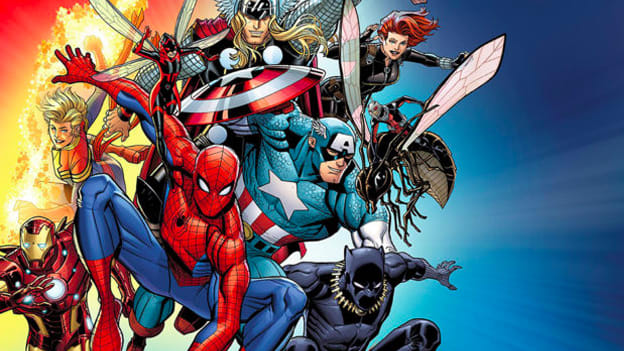How Marvel is innovating using diversity and inclusion

The year 2008 saw the advent of the iconic superheroes Iron Man, Captain America, Thor, Black Widow, Avengers, and over the past decade, the Marvel Cinematic Universe (MCU) has become the biggest movie franchise ever. Admittedly, I am myself the biggest fan of Marvel movies and am guilty of catching them on the first day, even at the expense of missing work.
These superheroes were introduced with a relatively small budget superhero movie Iron Man. The movie starred the down and out actor, Robert Downey Jr., as Iron Man, an extremely flawed character, self-centered & narcissistic, who transformed through the movie. Before this movie, Iron Man was a relatively small superhero character and had not found much traction with comic book fans as compared to Batman, Superman, etc. But the movie worked and the concept of a “shared movie universe” was created, and from that day on, Marvel did not look back and kept building on this theme with several original stories of relatively unknown superhero characters like Captain America, Thor, and this year released the biggest moneymaker of all-time, Avengers Endgame.
But keeping aside my fascination for these movies and characters, as a management professional, I keep thinking about - “How in the world did Marvel achieve this momentous feat”? It is important to note that Marvel filed for bankruptcy in 1996 and was struggling before launching the MCU. Here are my two cents on the subject.
Organization effectiveness: Beating the competition
Let us try to understand Marvel’s strategy from the perspective of organization effectiveness. Organizations exist to create value, and their ability to utilize available resources in a way that maximizes value creation is effectiveness. Organizations need to keep track of their progress by continuously evaluating their performance, and there are broadly three most important processes by which leaders measure and evaluate effectiveness; namely, control, innovation, and efficiency.
Control means having control over the external environment and having the ability to influence and attract customers and resources. Innovation means developing internal capabilities to produce new products and services, also developing the capacity to influence people’s ability to change, adapt, and create better ways of working. Efficiency means developing and using better techniques to improve productivity to become cost-effective.
As per this framework, it looks like the Marvel focused on innovation as the approach towards improving organizational effectiveness. As any progressive organization would do, Marvel understood the pulse of its customers and realized that comic fans wanted more representation of different superhero characters in movies. They wanted engaging story-telling with human characters who had relatable traits. Marvel estimated that these movies had the potential to be blockbusters not only in the USA but across the globe, which meant more representation, diversity, and inclusion of people from different geographies, cultures, generations, ethnicity, etc. But most of all, they needed fresh ideas and new ways of working, and to create something unique which had not been done before in this segment, they needed creativity. Marvel then started working towards niche differentiation as its core strategy, relying on creativity and innovation to help them build an edge over their competition.
Driving innovation through diversity and inclusion
Marvel created a virtually invincible universe comprising of a wide variety of superhero characters, the success of which their rivals could not replicate. Once they had established MCU with the first Avengers movie, they realized that to take this universe to the next level, Marvel diversity & inclusion as a tool for producing different ideas and, eventually, better results.
By leveraging diversity & inclusion for enhancing innovation, Marvel created an inclusive cinematic universe showcasing a wide representation of society. They introduced the Black Panther, the first movie in which the entire cast and crew were people of color. Marvel gave creative freedom to the director, Ryan Coogler, to choose his cast and crew so that the best results can be achieved. This resulted in reduced decision-making time, increased coordination and motivation of the entire crew, reduced conflicts, and super turnaround time to bring the finished movie to the audience. The movie not only brought about a cultural shift in cinema, but proved to be a massive financial success, and earned a nod for the in the best movie category at the Oscars - a first for a superhero movie.
Similarly, another aspect of the same concept was bringing in generational diversity, with a young spiderman taking selfies in movies, young Shuri as a genius scientist, things which were never done before. Marvel also created well-fleshed out, strong female characters, who were not supporting roles in movies, but standing head-to-head with the leads.
Sustaining the momentum
Marvel is now working towards bringing even more innovativeness in their approach. During the recent San Diego Comic-Con (SDCC), MCU announced its roster of movies for the next two years, where it showcased what organizations can achieve by dedicatedly focussing on innovation, and leveraging diversity & inclusion. While organizations, in general, are still stuck with the notion of hiring women to improve gender diversity, Marvel has shown that it is not only about gender diversity, it is about creating an inclusive culture where everyone is recognized and appreciated.
Organizations can use any of the three approaches towards measuring its effectiveness in creating value - control, efficiency, and innovation; it ultimately depends on the values driven by the top. However, as the success of MCU shows, organizations that truly embrace innovation, diversity, and empower their resources to be creative can achieve tremendous success.
-------------------------------------------------------------------------------------------------------------------------------------------------------
References:
- HBR Podcast: Business Lessons from How Marvel makes movies
- Organizational Theory, Design & Change; Gareth R. Jones
















